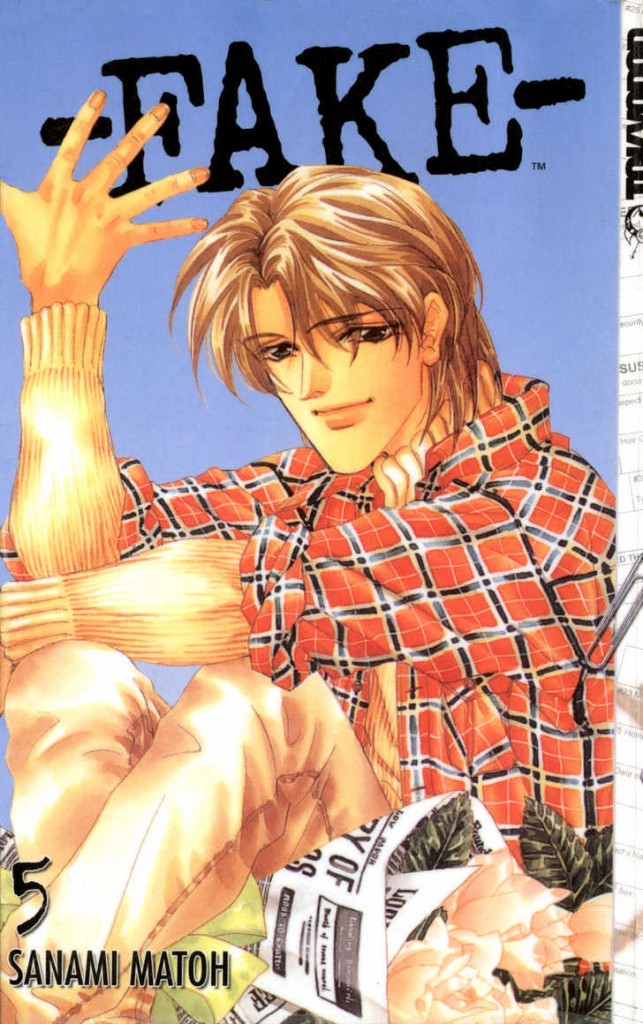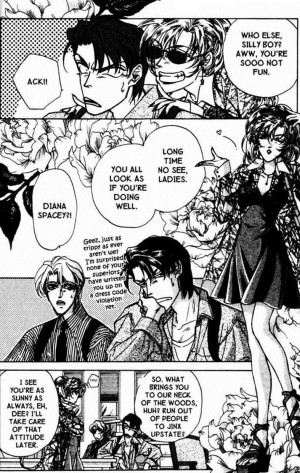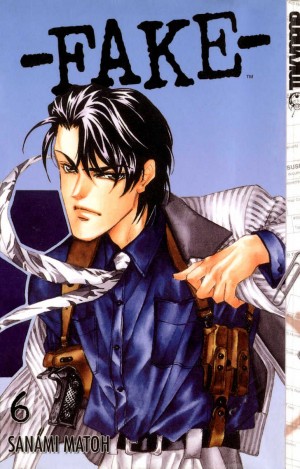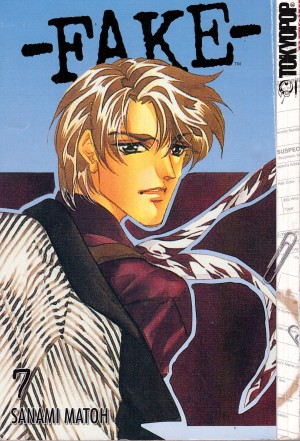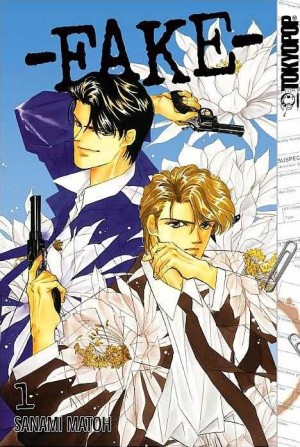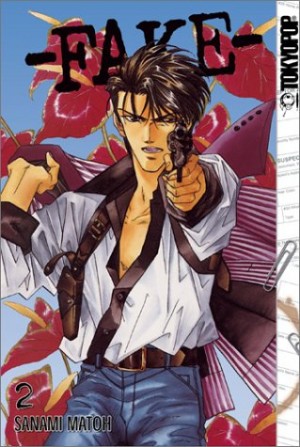Review by Ian Keogh
The tagline on Fake covers summarises the series as starring New York cops Ryo and Dee with an attraction for action… and each other. It’s a description that prompts visualisations of 1970s American TV cop shows, where every character had a gimmick that substituted for any real character: one sucked lollipops, one was in a wheelchair, one wore a tatty old raincoat… and Fake would fit right into that genre. Ryo and Dee are given just enough surface personality that their being gay comes across as being a gimmick. For all the will they or won’t they tease, the pair never convince as rounded human beings.
Another similarity with 1970s cop shows is the eccentric supporting character, who comes in the form of teenage irritant Bikky, now fourteen, but very much in love with Carol, three years older. The previous book more than hinted at the consummation of a relationship, although that’s denied in the dialogue here. Sanami Matoh fleshes out some other members of the supporting cast, mainly via comedy style vamping, which provides a surprise lead-in to revelations about Ryo’s past. This renders the opening story more emotionally charged than many in the series, but as with other major character moments, it doesn’t convince. Ryo and Dee spend so much time arguing with each other in exaggerated fashion that there’s nowhere to go to give them real depth when required. It’s a shame, because with a different approach there’s the basis of something heart-rending, but it doesn’t work.
Matoh usually formats her books so the one longer, more dramatic piece is accompanied by two shorter stories where the comedy is turned up, but that’s changed as a loaded question becomes the plot device for the second story. This has the gravitas the opener lacked, with an equally good dilemma at the heart, and Matoh’s regular three story format keeps it tight as there’s no room to meander. It’s a really good piece of work, and shows what Fake could be with a slightly different emphasis.
As ever, the closer is the spotlight on Bikky and Carol, but with additional previously unseen psychic flashes. It takes the strip into new and strange territory considering that to date it’s all been reality based. As Fake goes, it’s decent enough, if odd. Two further books complete the series.
